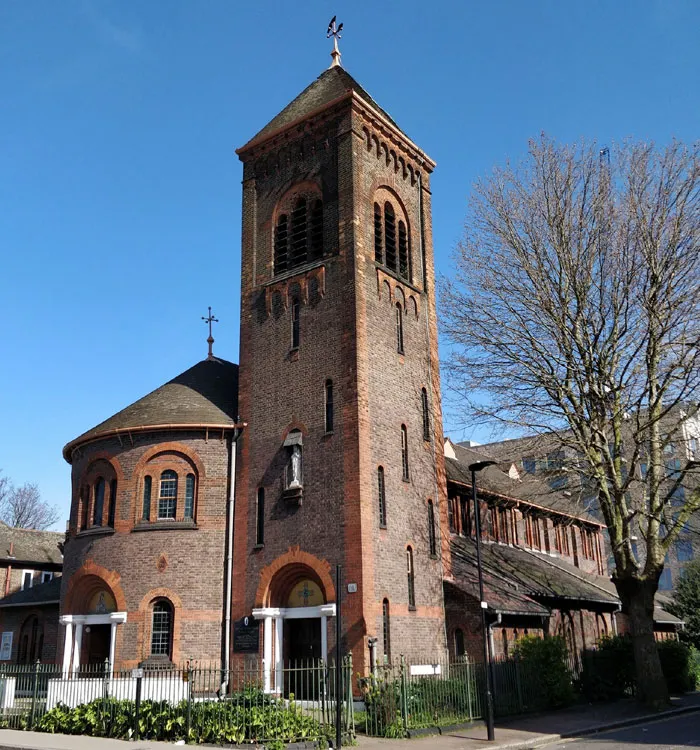
Introduction
Our Lady of Compassion Church, Upton Park, London is a Roman Catholic parish church in the Upton Park area of east London, dedicated to Our Lady of Compassion. Catholics in the area had previously worshipped at chapels attached to schools in the area until the church and its parish were both established in 1911.
Our parish has its roots in the immigration of Catholic Irish families in the late 1700s. After the Second Catholic Relief Act of 1791, priests in Stratford began ministering to the local Catholic community in East Ham, Forest Gate, Plaistow, and Upton Park. In 1869, Cardinal Henry Manning, Archbishop of Westminster, purchased the eight acres Boleyn Castle Estate in Upton Park for £12,000 in order to build a school, named St Edward’s Reformatory, to educate Catholic boys and train them for a trade.
As the Catholic population in Newham increased, churches were built in Canning Town (1859), Forest Gate (1884), Silvertown (1887) and Custom House (1896); all of which were some distance away. In 1901, a temporary iron chapel was built on the school grounds. The following year, a new Catholic mixed elementary school was built on Castle Street to accommodate 300 pupils. And in 1904, West Ham United Football Club moved to Upton Park, next to the school.
Many priests served as chaplains at St Edward’s school, but it was Fr Zsilkay (chaplain for 22 years) who began to minister to the local Catholic population. On 30 April 1909, Fr Frederick Gahagan was appointed Parish Priest in Upton Park and served for 37 years. He quickly set about raising funds for a permanent church and presbytery. The church was completed in 1911 and the new High Altar was blessed by Cardinal Bourne on 11 December 1913. Our church also has two side altars, one dedicated to Our Lady of Compassion and the other to the Sacred Heart of Jesus.
Another historic event, which took place during World War I, was the establishment of the Diocese of Brentwood on 20 July 1917. Our parish was officially erected on 8 August 1918 and solemnly consecrated by Bishop Doubleday on 24 October 1929. Relics of two early Christian martyrs, Saints Januarius and Venustus, were inserted into the High Altar. Finally, the Presbytery was built in 1927.
History of Our Lady of Compassion Church, Upton Park
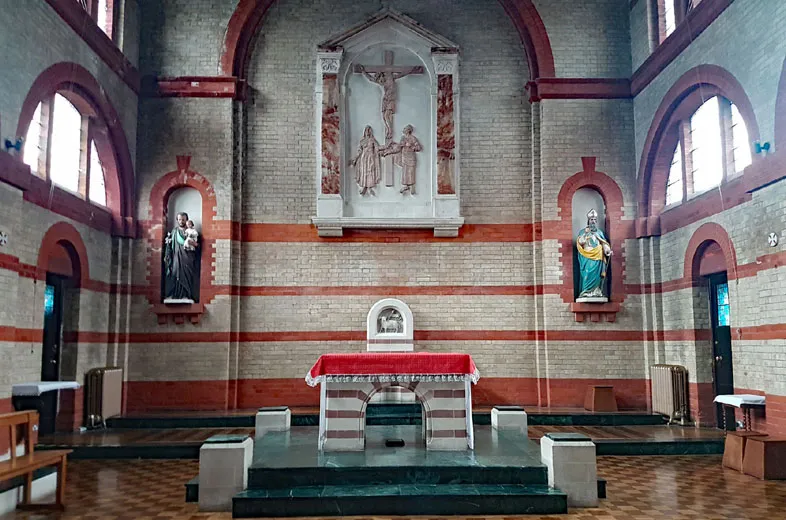
The Our Lady of Compassion Church, Upton Park was built in 1911 to an Italian Romanesque style by the local architect, Robert Leabon Curtis, and sits in a plot of land that had been a Catholic School.
In 1869, Cardinal Manning bought the Boleyn Castle Estate to provide a school for Catholic Boys, and a “tin tabernacle” was built on the site for prayer in 1901.
That a Catholic facility would be built on a site allegedly named after Anne Boleyn probably caused much sniggering at the time, although there’s no evidence to think the Boleyn family were associated with the mansion house the estate was named after.
Much of the site closed in 1907 when the land was let to a maternity home and sold to the football club, but a couple of years later, it was decided to erect a decent sized church, and that’s what we have here.
An anonymous female donor provided £3,000 towards the church’s construction, which was a considerable amount of money at the time.
The exterior of the church looks a bit austere, and not at all Catholic in style, but once you go inside it’s fairly obvious this isn’t an Anglican space, with several spaces for veneration and the confession boxes.
The tall nave with its wooden ceiling gives the church an appearance of something somewhat older, but the brickwork is fairly decently late Victorian style (even if built in the Edwardian age), and the altar is surprisingly plain.
What’s rather impressive though, and make the church worth a visit are the Stations of the Cross that line both sides of the wall.
The church was badly damaged during World War II, and later restored, if there were stained glass windows, they were not replaced. Like most Catholic churches, it’s open all day to go in for a look, or if so minded, to pray.
Our Lady of Compassion
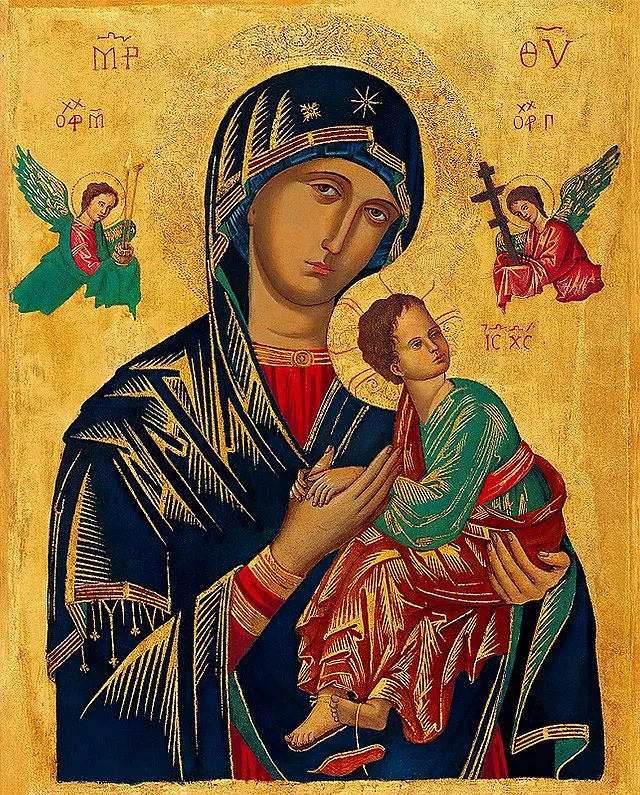
The convent of Our Lady of La Piedad dates back to the year 1595. Don Luis de VelascoII, when he was Viceroy of New Spain, had as his confessor a Dominican, Fray Cristobal de Ortega, who also acted as his financial adviser. In gratitude for the friar’s diligence and loyalty to his interests for many years, Don Luis presented the Dominican Order with the convent on the twelfth of March, 1595.
Shortly afterward, a Dominican religious, accompanied by a Lay Brother, had to go to Rome on business for the Order. The religious of the new Convent of La piedad commissioned him to bring back a painting of Our Lady under her title of La Piedad, that is, “Compassion,” representing the sorrowing Mother holding in her arms the lifeless body of her Divine Son. Rome in that day was the home of many outstanding painters, and the friar was charged with securing the best possible work of art.
On arrival, the religious asked an artist of great merit to accept the commission. The painter agreed, but would not set a date upon which he would undertake to have the picture ready. In vain the friar tried to fix the time, saying that he had to return to Mexico very soon, and could not leave without the painting. But the artist only replied that he could not promise it by any definite date, since he worked only when inspiration came to him.
Finally, when they came to an agreement on the conditions under which the artist would accept the assignment, the Dominican began to describe the general outlines of the picture he wanted. Brusquely the artist cut him short. He knew his business; all the good friar had to do was wait. When the painting was ready, he would be notified.
The Dominican left the studio with mixed emotions. He had secured the artist’s promise, true. On the other hand, the great man had shown very little interest in the project.
Time went by, and no word came from the artist. Very soon the religious would have to return to Mexico. Finally he could wait no longer. With some misgivings he visited the studio. Had the painting been finished?
“Finished?” answered the artist, with haughty indifference. “Why, I have scarcely begun to make a sketch of it!”
The poor friar did not know what to do. His superiors had ordered him to leave for New Spain the following morning. For some time he stood in thought, and at last he said:
“I will take back the sketch, at least, so that they may see it is no fault of mine.”
“And what good will a simple sketch do?” asked the painter.
“In Mexico, we shall find someone who can finish the painting.”
“Only one brush can complete this picture,” replied the painter; “mine!”
“But I mean, with the help of God!” burst out the friar.
These words, uttered with such simple faith, shook the artist from his indifference – something that even a bag of gold pieces would not do – and he handed over the sketch.
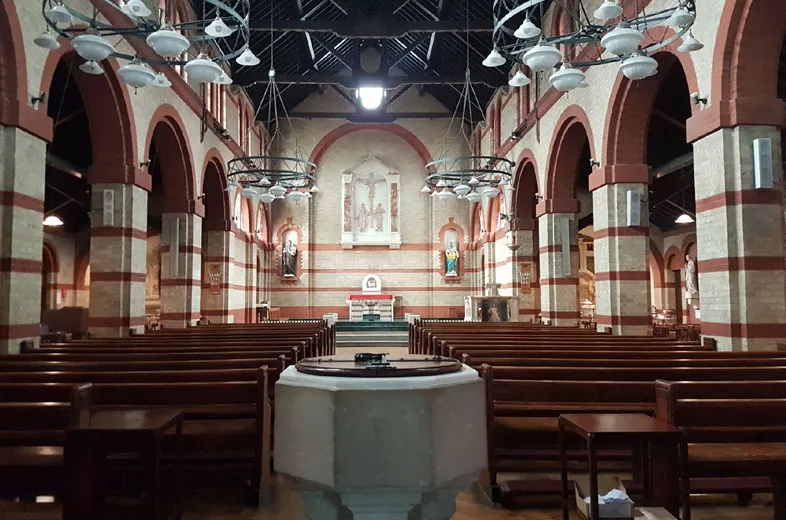
History of Our Lady of Compassion
A month later, the friar and his Lay Brother companion were in mid-ocean, bound for New Spain. Suddenly a storm arose, the like of which in ferocity and intensity the crew and passengers had never before experienced.
“Padre! We shall be drowned!” they cried in terror.
“Have confidence in Our Lady, Star of the Sea,” the priest answered serenely. “She can calm the waters with a glance.”
“We will promise her a thank-offering if she spares our lives,” they said.
“Then let us make a promise to Our Lady,” replied the friar, “to build her a sanctuary in Mexico.” And so they promised.
At once the storm began to subside, and soon the sea was calm again. The grateful crew and passengers, mindful of their promise, made generous offerings.
Shortly thereafter the ship arrived at Veracruz, and the two Dominicans made their way overland to Mexico City. Their fellow religious at the Convent of La Piedad were considerably chagrined to learn the inconsequential outcome of the friar’s business with the Roman artist. Some complained that they might have secured a suitable painting in Mexico, for a fraction of the cost, and much more quickly. Others said it might be a chastisement from God for their vanity in choosing a famous artist to do the work.
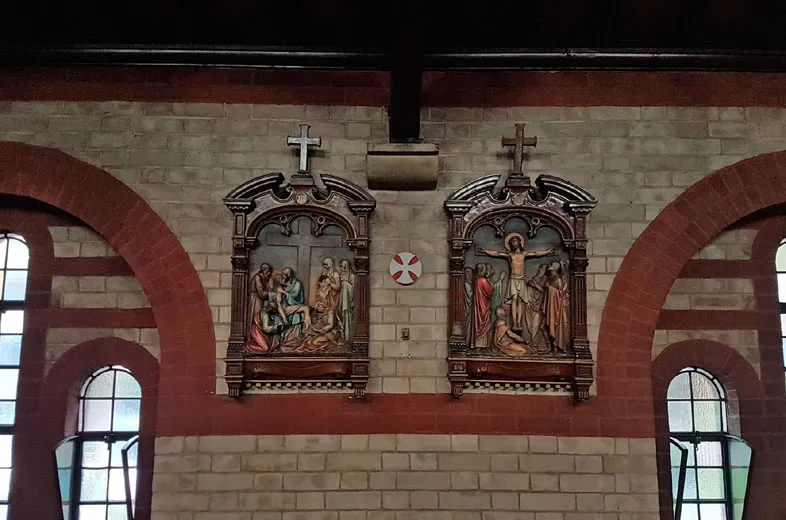
With many misgivings, they set about opening the crate in which the sketch had crossed the ocean. As they were unrolling the canvas, signs of color were seen, but they assumed that some paint had adhered to it in the artist’s studio. Their astonishment increased as they continued unwrapping the canvas, and when it was exposed to view, they gazed at it in silence, unable to take their eyes from the painting. For painting it was, of extraordinary beauty and perfection, depicting the Mother of Jesus holding her crucified Son.
“No doubt our brother sought to surprise us,” said one.
“But he would not tell a falsehood for that,” replied others.
So absorbed were they in the painting that it was some time before they saw that the two newly returned religious were still on their knees before the picture, overcome by the marvelous outcome of events. When they were at last able to speak, they related the circumstances in which they had acquired a rough sketch for the painting.
They added the tale of the storm at sea and the near-shipwreck. They told how the crew and passengers had come to them with the promise to build a shrine for the Virgin if she spared their lives. When they had concluded their recital, all agreed that the hand of God had played a part in the supernatural affair of the painting.
From that time the religious of the Convent of La Piedad preached devotion to Our Lady in her image. Notable miracles have been worked through her intercession, and many of the most outstanding have been certified by formal process before the ecclesiastical tribunal.
This venerable image today hangs in the new sanctuary of Our Lady of La Piedad. It is an oil painting on canvas nearly nine feet high and eight and a half feet in width, in a wood frame, today covered with glass. The picture symbolizes the supreme moment when the Son of God, having enacted the drama of Calvary, lay in the arms of His Mother. A soft, clear light illumines the whole, and the colors are as fresh and bright as though the scene had been painted yesterday, instead of more than three and a half centuries ago.
Many indulgences have been granted to the Church of La Piedad, and it has been erected into a Minor Basilica.
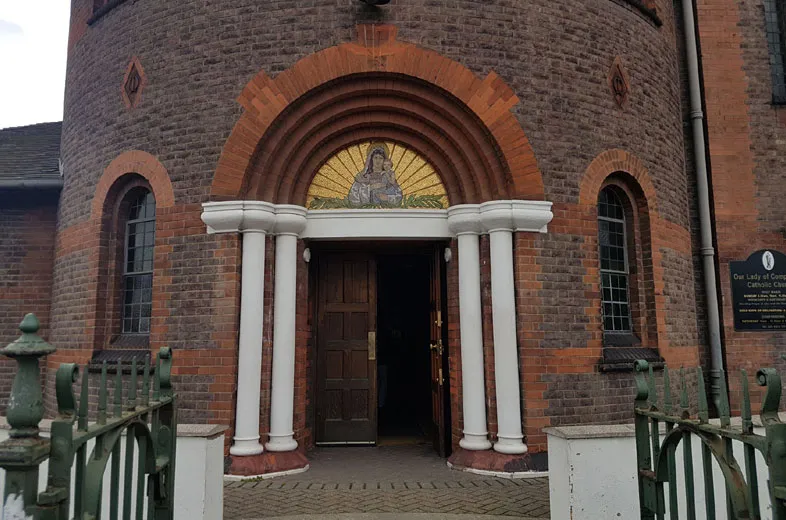
Feast Day – 3rd April
The Annual Feast of Our Lady of Compassion for the Society is held on 3rd April.
On 3rd April, by a decree of the Superior General, the Society of St. Pius X will have the joy of celebrating the Feast of Our Lady of Compassion for the first time in all our houses as a special feast of the Society. This feast will be celebrated under special circumstances this year – for most, it will behind closed doors. It presents an ideal and providential opportunity to entrust the whole of the Society and our families to the protection of the Blessed Virgin Mary.
The priests of the Society will ask the Blessed Virgin Mary to protect our entire spiritual family and to grant us the gift of prudence, by which we may navigated the stormy seas of our present time, and the gift of apostolic zeal for the sanctification of the souls in our care.
In each of our houses, all the Society members will gather before the Blessed Sacrament and recite together the act of Consecration of the Society to the Sorrowful and Immaculate Heart of Mary.
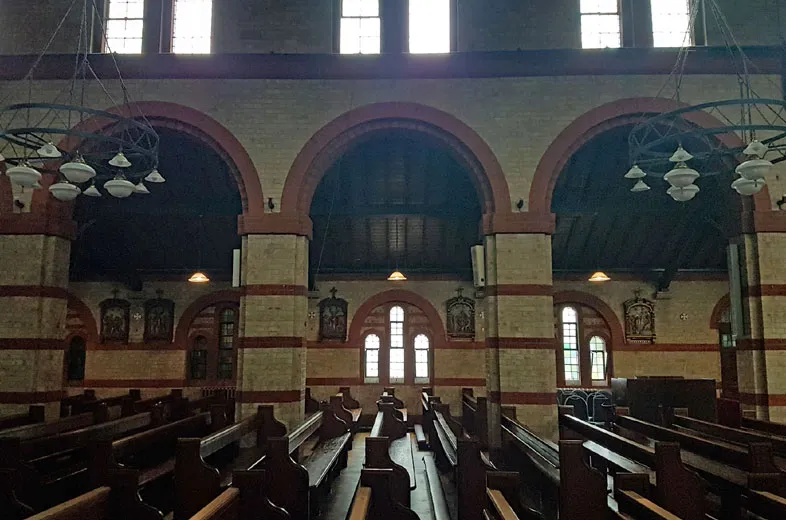
Mass Time
Weekdays
Sundays
Church Visiting Time
Contact Info
555 Green Street, Upton Park,
London E13 9BF, United Kingdom
Phone No.
Tel : +44 20 8472 1181
Accommodations
How to reach the Church
London City Airport (LCY) is a regional airport in London, England is the nearby airport to the Church.
Upton Park Subway Station in London, England is the nearby Train Station to the Church.








